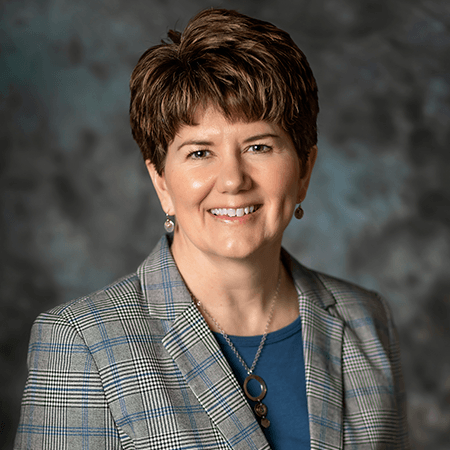Smart Planning for Smart Giving

By Gene Rebeck
You may have already wrapped up your 2019 tax returns. But there’s good reason to start thinking about next year’s taxes—which, after all, cover this year. The federal Setting Every Community Up for Retirement Enhancement (SECURE) Act, which became law on Jan. 1, has changed many of the rules for estate and charitable planning. In fact, under the SECURE Act, you can maximize your charitable giving and minimize the taxes your beneficiaries have to pay on the retirement accounts they inherit from you.
We asked three veteran advisers to share their insights about how families can best benefit from the new rules. The experts we’ve talked to aren’t offering tax, legal or financial advice. Consider their thoughts the start of discussions to have with your tax preparer, attorney or financial adviser.

Julie Nelson, CPA
Even before the SECURE Act, we’ve advised our clients with charitable giving plans to make a direct transfer of their required minimum distribution, or RMD, from their tax-deferred retirement accounts. This is especially a good tactic now that the standard deduction is so high that many charitable deductions have no effect on federal taxable income. By making a direct transfer of an RMD to a qualified charity, you can eliminate that income from your tax return.
If you follow this strategy, taxpayers should be sure to have the check written directly from the IRA custodian to the charity. If the check is made payable to you, it won’t be considered a qualified charitable distribution, or QCD. That means it will be treated as taxable income. You can give more than your RMD—up to $100,000, in fact. Be sure to let your tax preparer know that you made a QCD in 2020 when you do your tax return next year.
The SECURE Act has increased the age by which individuals are required to make RMDs from their tax-deferred retirement account, from 70½ to 72. The RMD starting age doesn’t affect the starting age for QCDs. You can make a QCD after age 70½, even if you don’t start taking RMDs until you’re 72.
Another change that can benefit certain retirees who want to work part-time is the ability to contribute to an IRA past the age of 70½. This means a couple over 70½ can contribute up to $14,000 in 2020 if both spouses are contributing the maximum of $7,000 a year and have at least that much in earned income. If you plan to make post-70½ QCDs or post-70½ contributions, be sure to consult your tax professional to ensure you navigate these rules successfully.
Julie Nelson generously gives of her time as a member of the Initiative Foundation’s Board of Trustees.

Bradley Hanson
The good news is that the SECURE Act provides several improved opportunities for tax savings for the participants. For instance, the new law permits early withdrawals from retirement plans or IRAs, without a penalty tax, of up to $5,000 (per spouse) if the money is used to pay for the expenses associated with childbirth or adoption.
The bad news is that the SECURE Act dramatically shortens the period of time over which most beneficiaries must withdraw from inherited IRAs. Before 2020, all non-spouse beneficiaries could “stretch” their distributions from inherited IRAs over their life expectancies. This allowed them to defer those taxes over more years and to take advantage of lower tax brackets.
Under the SECURE Act, the only beneficiaries who still can stretch an inherited IRA over their life expectancies are known as EDBs, or eligible designated beneficiaries. EDBs can be surviving spouses, minor children, disabled or chronically ill individuals, and individuals who are less than 10 years younger than the participant, such as a sibling or a non-spouse partner. After minor children reach adulthood, they cease to be considered EDBs and must switch to the 10-year distribution period for what’s left of their inherited IRA. Minor grandchildren don’t qualify as EDBs, so they must take the distributions over 10 years regardless of their age. In any case, the SECURE Act’s distribution rules may require you to make changes to your estate planning to avoid unintended results, especially regarding trusts for children or grandchildren.

Paul Grassmann
In 2020, many individuals and families will be reassessing if their planning continues to meet their goals and objectives in light of the SECURE Act. For many, the new legislation creates significant planning quandaries, especially for those who’d like to control these funds beyond the 10-year window, or who simply desire further tax-deferred growth on these funds for their families. While there still are trusts that can hold and secure retirement assets beyond the 10-year liquidation period, income over $12,950 retained in trust is taxed at 37 percent, the highest federal rate.
But there’s another option: charitable planning. For those who already have set up outright gifts or are considering making them, ensuring these gifts come from retirement assets when possible is now more important than ever. This can be done either through the IRA Charitable Rollover after age 70½ or as a beneficiary designation on the retirement account. Most people view their charitable actions as a pure gift, with no thought of a personal benefit. In fact, there are numerous other ways you can structure these gifts to create charitable impact AND provide for your family.
For instance, there’s what’s called a Charitable Remainder Trust (CRT). A CRT doubles the amount of time retirement funds can remain invested tax-free from 10 years under the SECURE Act to 20 years. In certain situations, the funds can remain in the trust throughout the beneficiary’s lifetime. During the trust term, the trust will typically pay out to your children or other heirs. At the end of the term, what’s left over can be given to the charitable causes of your choice.
A CRT can result in a small decrease for heirs, but it also allows for a structured payout over a long period of time for heirs while creating a significant charitable gift. However, in some situations when the beneficiary’s tax rate or the trust tax rates are factored in, your beneficiaries might actually receive more through the CRT than with non-charitable options.
Leave a Legacy
As you consider how your estate plan will best provide for those you love, remember that charitable giving can offer additional benefits and leave a legacy that reflects your values for years to come. Contact Carl Newbanks or Mike Burton and we will help you discover the many charitable options available in Central Minnesota.


Related Articles
A Fund for Fallen Soliders
New Partner Fund supports annual tribute to recognize honor, duty, sacrifice. Read More
A Gift of Gratitude
Blandin leader views $10,000 donation as part thank-you, part investment in the region. Read More
Guidance for Giving
Hosted funds create long-lasting giving options that benefit donors, local causes. Read More


